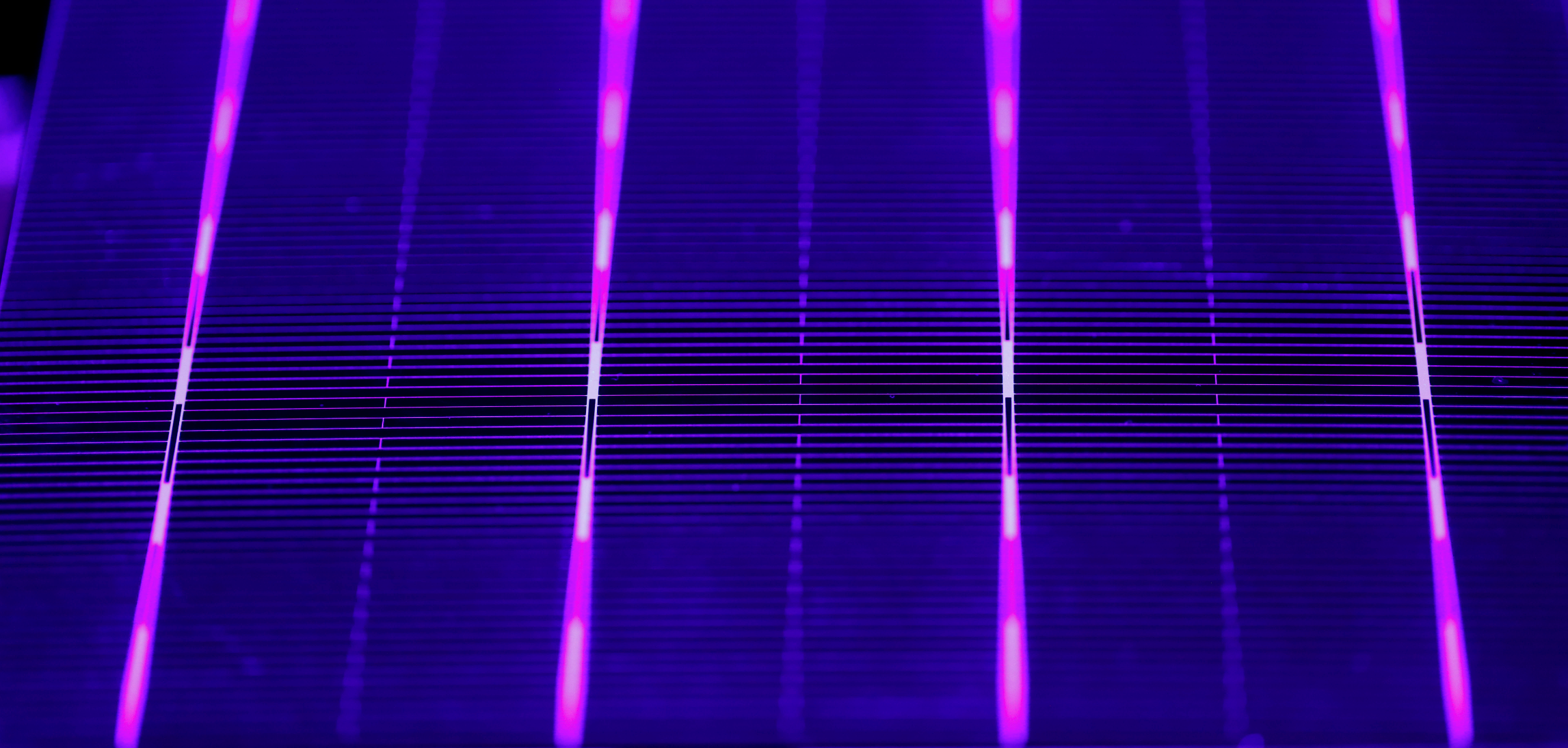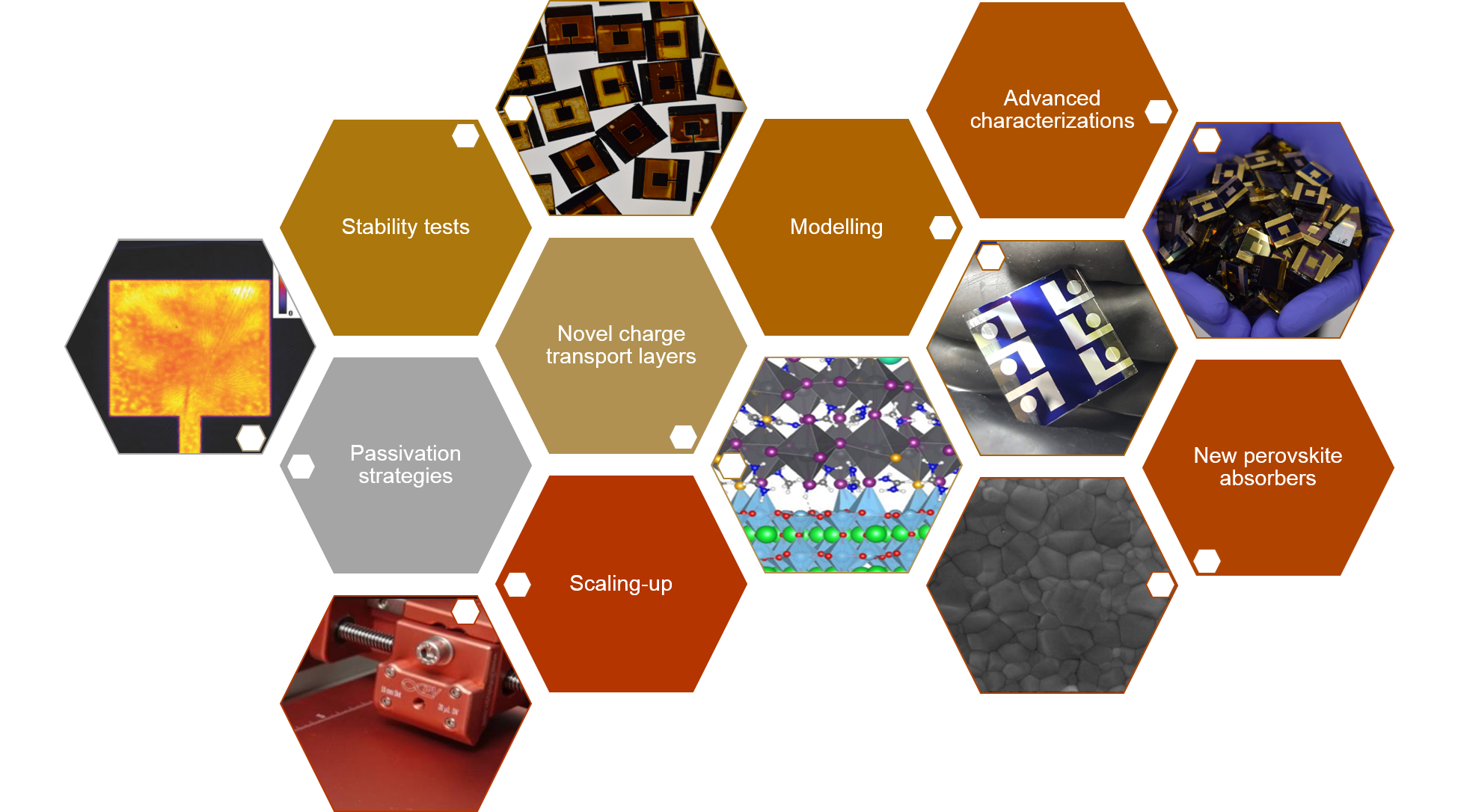

Research Details
Metal halide perovskite solar cells (PSCs) have attracted significant research attention in the past years and are regarded as a promising candidate for next-generation photovoltaic technology. This unprecedented surge in device performance is a testament to the extent to which PSCs upended the scientific knowledge of solution-processed photovoltaic devices. This remarkable success can largely be ascribed to a steadily improved device design, combined with optimization of the employed materials: from the first mesostructured configuration – a legacy of the evolution of PSCs from the work on dye-sensitized solar cells – to the planar thin-film design; and from the early methyl-ammonium lead iodide perovskite to the quadruple-cation mixed-halide perovskite.
PSCs can be fabricated either in the n‐i‐p or p‐i‐n device configuration; the first letter refers to which contact was deposited first, as sketched in Figure 1. Beyond nomenclature, the device configuration influences several physical properties. Therefore, at KPV-LAB we develop novel charge selective contacts and passivation techniques aiming high performance.

Figure 1. Schematic representation of n‐i‐p and p‐i‐n PSCs with a detailed view of the perovskite/ETL interface. (Source: Aydin, E., De Bastiani, M., De Wolf, S., Defect and Contact Passivation for Perovskite Solar Cells. Adv. Mater. 2019, 31, 1900428.)
Currently, KPV-LAB has focused on developing large-area compatible fabrication methods for high-performance solar cells using emerging hybrid perovskite material systems which include mixed cations and mixed halides. We majorly work on precursor-process-structure-property-performance relationship for hybrid lead halide perovskites, then translate these lessons into scalable processes, with the aim of achieving PCE > 25% and extended stability.

Related Publications
This work, which came out in Science, demonstrates the first perovskite solar cells with 96% PCE retention after damp heat test, with PCEs 20%.
This work was performed in collaboration with Ilke Celik from the South Dakota School of Mines and Technology.
An analytical solution of photoluminescence reabsorption (PLr) is used to determine the intrinsic radiative carrier recombination rate of metal-halide perovskite films. Simulation of its impact on the quasi-Fermi-level splitting (QFSL) reveals it is detrimental at high but advantageous at low nonradiative recombination rates. Importantly, neglecting PLr results in overestimation of the effective nonradiative recombination rate in perovskite solar cells.
This review, which took place in Advanced Materials, provides a comprehensive overview of the tin-oxide electron-selective layered for champion perovskite solar cells.
The MAPbI3 polycrystalline films with 25.15um charge carrier diffusion length and grain size of 11 um are achieved by slot-die method assisted by KSCN. Based on the films, the planar solar cells with all layers being deposited by scalable methods achieve an efficiency of 21.38%.
In this work, we explore the underlying reasons for scaling losses of perovskite solar cells, especially for the p-i-n configuration, and have successfully reduced this scaling loss to ~0.9%. With a comprehensive understanding of the underlying mechanisms, high-quality PSCs with a PCE of 20.3% for 2 cm2 devices and 19.8% for 6.8 cm2 mini-modules were obtained.
This study, which takes place in Advanced Materials Technologies, demonstrates PLD‐grown IZRO transparent electrode on semi‐transparent perovskite solar cells.
This study, which took place in JPCC, demonstrates the correlation between the Urbach energy of perovskite absorbers and open-circuit voltage deficiency at the solar cell level.
This study, which took place in Nature Energy, show that a lower bandgap perovskite than needed at standard test conditions is actually beneficial to perovskite/silicon tandem cells in the field.
This study demonstrates improved performance and stability via in-house synthesized organic cyano‐based π‐conjugated molecules. Kai Wang's this passivation study came out in Advanced Functional Materials.
This study, which came out in the recent issue of ACS Applied Materials & Interfaces, successfully demonstrates the Lewis-acid (TPFB) doping of the widely used spiro-OMeTAD hole transport materials for perovskite solar cells to. This dopant replaces the conventional LiTFSI/tBP doping. By doing so, the device stability is increased and processing is simplified.
This work, published in Solar RRL, presents a detailed study of the photophysics of multiple‐cation mixed halide lead perovskites and develops a concise picture of the impact of cesium/rubidium incorporation on the photophysics and device performance.
In collaboration with Carolin M. Sutter-Fella from Lawrence Berkeley National Laboratory
A comprehensive review on the passivation routes for perovskite solar cells toward the Shockley–Queisser limit.
This study unveils the potential of the room-temperature processed sputtered-NiOx hole transport layers for the single junction perovskites and perovskite-based tandem solar cells, specifically which has rough bottom cells.
Thanks to PMMA: PCBM Double-side passivation, very high‐efficiency (≈20.8%) perovskite cells with some of the highest open circuit voltages (1.22 V) reported for the same 1.6 eV bandgap are demonstrated.